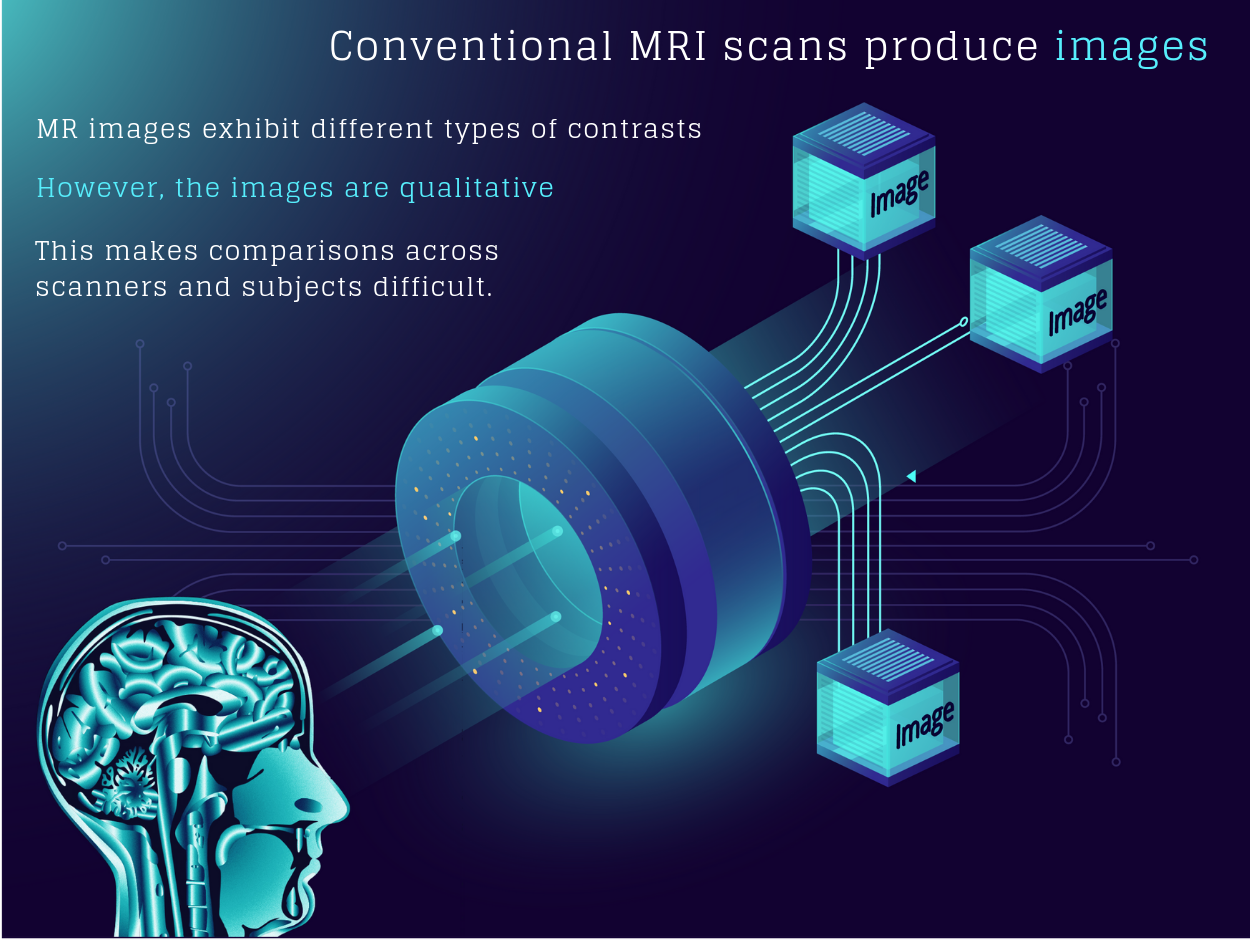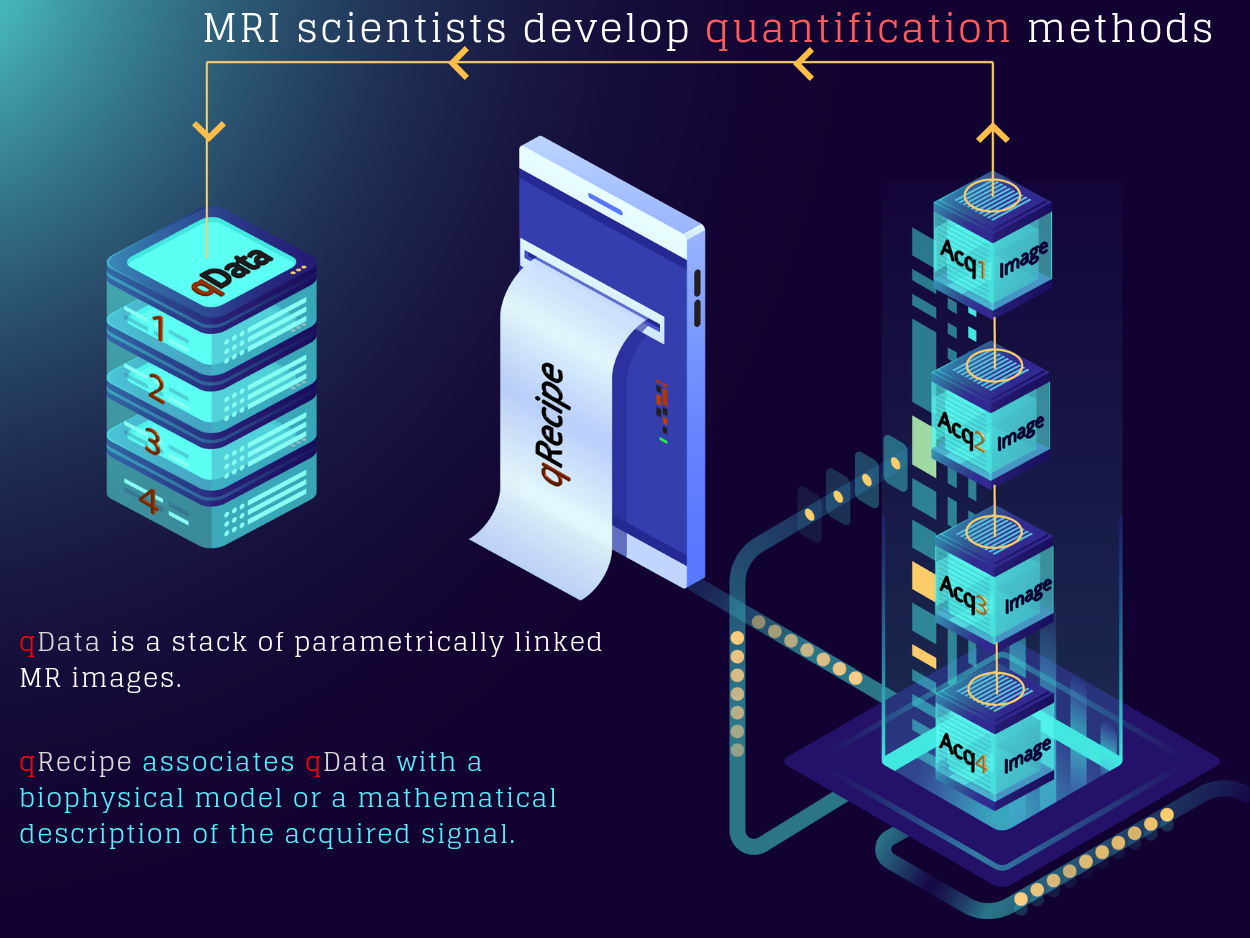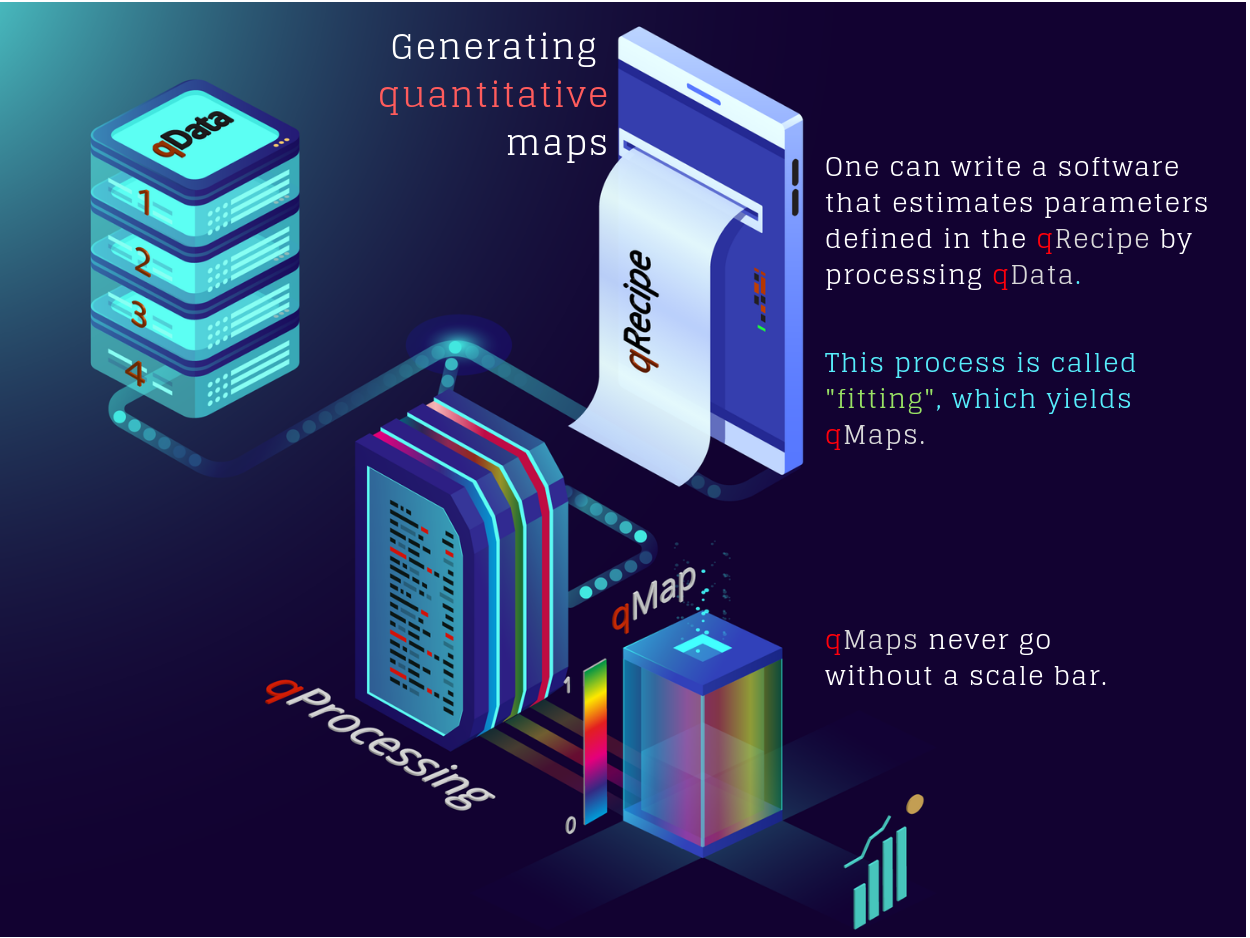Hello world

Magnetic resonance imaging (MRI) is an indispensable part of a radiologist’s toolbox. But MR images (MRIs) are not for radiologists only. A growing number of scientists are using MRIs to study different parts of the body, as well as how our body responds to external stimuli.

Quantitative Magnetic Resonance Imaging (qMRI) produces an arsenal of parameters reflecting the underlying tissue properties. Compared to conventional MRI, quantitative maps of these parameters provide a more direct link between the measured signal and the microstructural and biophysical characteristics of the target anatomy. Therefore, qMRI methods have been the tool of choice of many longitudinal and cross-sectional neuroimaging studies aiming at developing objective biomarkers.

At their core, all qMRI methods share a common methodology: a numerical recipe (qRecipe) that relates a set of parametrically linked MR images (qData) to some microstructural and physical features. Bringing multidisciplinary expertise together, MRI scientists develop new qData acquisition protocols and qRecipes to advance what we can measure with MRI today.
To make it easy to share qRecipes, we developed qMRLab, an open-source software that aims to bring quantitative MRI under one umbrella. To learn about the technical details of qMRLab, please read our poster from this year’s annual ISMRM meeting. If you find the abstract too dense, then here is an alternative explanation in a more lay language: Every MR Image is a Symphony, Every qMRI map is an instrument.

We believe qMRLab is an important step in this direction, providing a unified platform that researchers can use to fit their qMR data, simulate signals, and add customizable modules to fulfill the needs of the community. Currently, most labs use code they wrote themselves and is never shared, making it challenging to reproduce their qMR studies. By providing an open-source software package, coupled with a simple and easy-to-use graphical interface, we also hope to make these techniques accessible to a broader audience, and to ease the translation of qMRI techniques into the clinic.
NEXT: The Problem
Figures used in this blog post are created on Adobe Illustrator based on the free vector graphics provided by fullvector and from Freepik team, and original work by July Gerard via Behance.

|
Except where otherwise noted, the content on this blog is licensed under a Creative Commons Attribution 4.0 International license.
|
